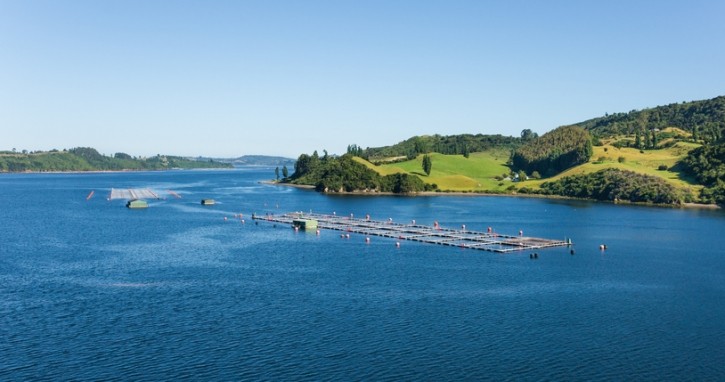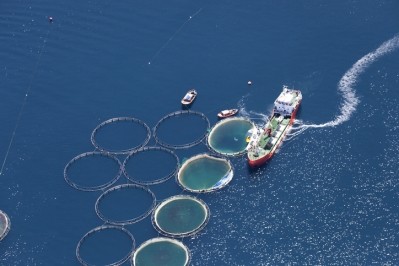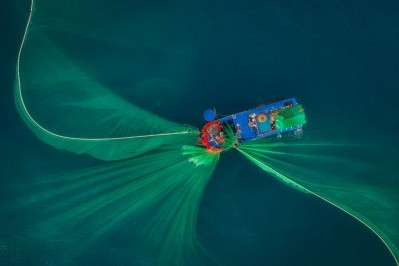Reduction fisheries: Management failings thwart sustainability improvements

In part one of its 2023 Reduction Fisheries Sustainability Overview, published last month, the not-for-profit marine conservation organization reported that while two European fisheries had improved since the 2022 edition, three South American fisheries demonstrated a drop in performance.
“Most of the evaluated fisheries have maintained their overall performance in terms of management and stock status and continue to be relatively well managed. Simultaneously, sustainability performance in certain fisheries, particularly those from South America, remains challenging,” claim the report’s authors.
The three fisheries in question are Anchoveta - Southern Peru/Northern Chile; Anchoveta Chile Valparaíso (V) - Los Lagos (X); and Araucanian herring - Central-South Chile. Despite these fisheries scoring relatively well on stock health, deficient management systems landed them in the lowest sustainability category (C - poorly managed), according to the SFP review.
Data from FishSource, SFP’s public database of fisheries information, for 11 fisheries whose catch is destined for fish oil and fishmeal, was analyzed and shared in the report. FishSource assessed the sustainability of the fisheries’ management by scoring them on five criteria: management strategy, managers’ compliance, fishers’ compliance, current stock health and future stock health.
Poor management creates risk
Dave Martin, program director at SFP and co-author of the report, maintained that low scores for management strategy and compliance were a common pattern across the board - not just in South America.
“None of the fisheries in the current report scored great on management strategy, but one of the changes in the last year or so was that the scores had dropped even further for some of these South American fisheries. These fisheries are not on the brink of collapse, they are just creating risk in the system and then you are only one or two seasons away from bigger problems,” he told FeedNavigator.
Martin explained that their scores in management strategy and compliance were based on whether management procedures are cautionary and follow the advice of scientists.
In the case of the two Chilean fisheries - both mixed fisheries - the review claims that, despite the presence of a management plan that incorporates provisions for adjusting catch limits in response to in-season changes, this was not being implemented on a practical level. This resulted in a set TAC (Total Allowable Catches) that exceeded the range recommended by scientific advice, noted the publication.
“They are not catching it all, but the risk is that at any moment things could change for the worse,” warned Martin.
Shared stock problematic
The other South American fishery that was downgraded was a shared anchoveta stock between Peru and Chile - a situation that is always a source of problems, claimed Martin.
“This is a problem we see all over the world - the two countries don’t even agree it is a shared stock. They do not coordinate on management and each unilaterally sets its own TAC, which, when they are added together, are significantly higher than scientists advise,” he purported.
The two European fisheries that registered improvements were European Sprat - North Sea, Skaggerak and Kattegat; and Sandeels nei - Dogger Bank area. Both were upgraded due to recovery of their stocks, explained Martin.
“They slowed down the harvest and let the stocks build,” he said.
However, he pointed out that they did not score well on management and are “one season from being back where they were”.
Calls for cooperation and collaboration
Overall, the SFP said the declining performance of the three fisheries and the turnaround in several European fisheries highlights the need for increased regional cooperation on shared fisheries and the critical role that pre-competitive industry and multi-stakeholder collaboration has in improving fisheries management.
Martin said that working through a Regional Fisheries Management Organization (RFMO) could help countries centralize management of shared fisheries, whilst fishery improvement projects and supply chain roundtables were among the initiatives that could drive improvements at an industry level.
“Generally we know that an individual seafood company can’t fix a fishery and that companies don’t always get along, which is why the SFP and others have been working to create forum models where companies can come together to solve mutual issues,” he said.
People and waste: beyond over-fishing
Whilst marine preservation is the overriding sustainability-related concern for fisheries, the sector faces other ESG challenges too, including waste reduction and the protection of vulnerable people, according to Martin.
Regarding waste, he said: “One third of fishmeal and fish oil is being made from the byproducts of seafood processing but there is a lot of room to grow and improve on that.”
The answer, he said, lies in establishing systems that make it easier to use the byproducts and trimmings.
“People don’t want to spend a lot of money or use space storing fish guts, so it is about making it easier. Now it is a lot easier to dump the byproducts and trimmings which is why it seems to only happen where fishmeal or seafood companies take the initiative,” he said.
The protection of small-scale fishers - key to reduction fisheries - is another huge challenge for the sector, he continued.
“We need to better protect and support the people working in fisheries, on vessels and in processing plants,” he said, adding: “The small-scale and community fishers are often the ones who fall through the cracks. They make up 90% of the people in the seafood supply chain and half of the global harvest but they don’t get the same attention because they are informal workers. It is a failing of the system that needs to be addressed."








